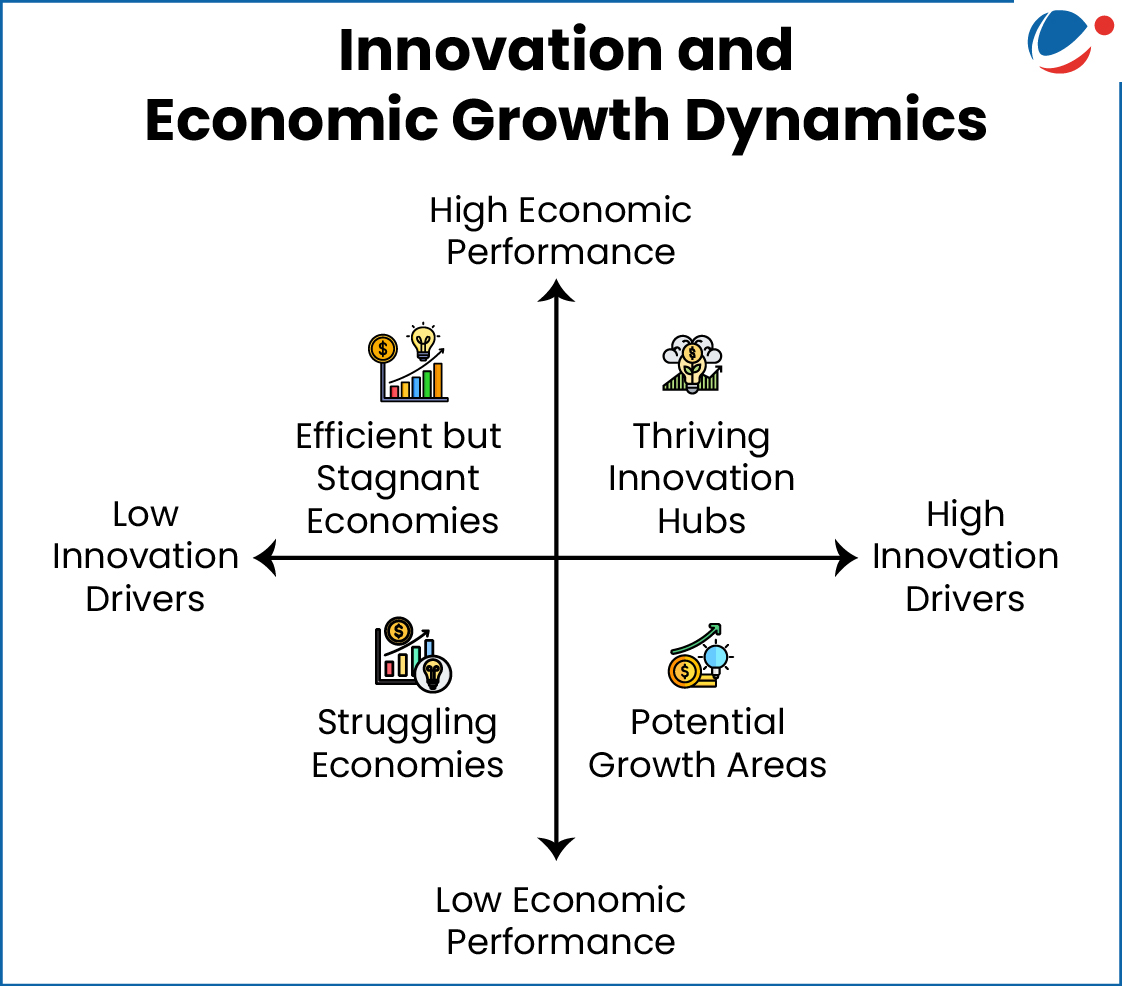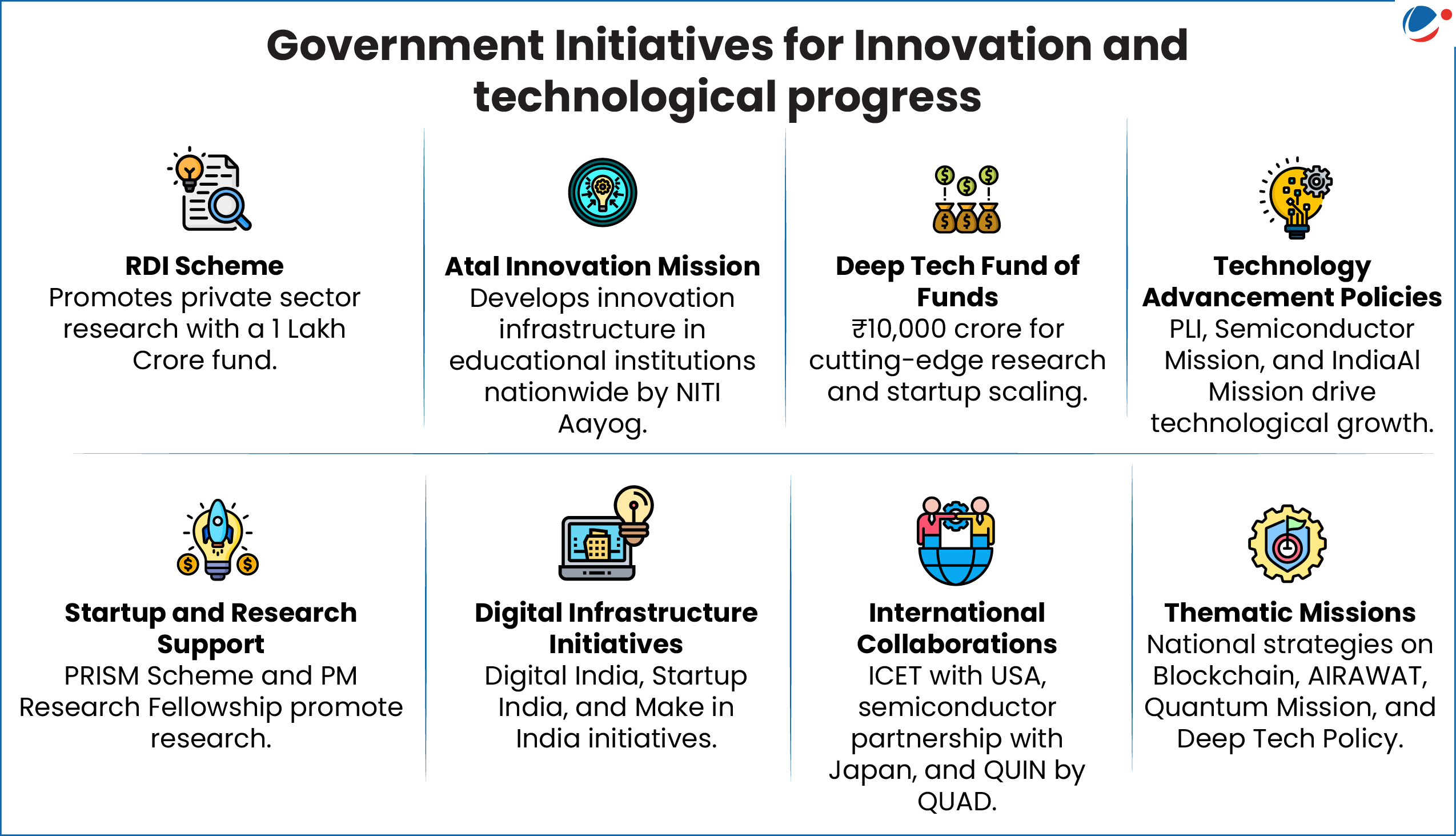Why in the news?
The Sveriges Riksbank Prize in Economic Sciences 2025 (Nobel Prize in Economic Sciences) was awarded to Joel Mokyr, Philippe Aghion and Peter Howitt for explaining innovation-driven economic growth.

About The Sveriges Riksbank Prize in Economic Sciences (Nobel Prize of economics)
- Establishment: In 1968 by Sveriges Riksbank (Sweden's central bank).
- It is not one of the five Nobel Prizes established by Alfred Nobel's will in 1895.
- Awarded by: The Royal Swedish Academy of Sciences
- First recipients: To Ragnar Frisch and Jan Tinbergen in 1969.
- Amartya Sen was the first Indian to receive Nobel Prize for Economics in 1998 for his contributions to welfare economics and social choice theory.
Specific Contributions of the Laureates
Joel Mokyr: Prerequisites for Sustained Growth
- He was awarded for "having identified the prerequisites for sustained growth through technological progress".
- For technological advances to drive sustained growth, three key elements must be present:
- A joint evolution of science and technology
- Mechanical competence
- A society open to change
Philippe Aghion and Peter Howitt: The Theory of Creative Destruction
- They were recognized for their mathematical model (framework) of creative destruction, developed in 1992.
- Creative destruction describes the process where a new and better product enters the market, making older products obsolete and causing companies selling them to lose out.
- This process is creative because it introduces something new and destructive because it outcompetes existing products.
- One of the key elements of their model stated that companies are incentivized to invest in R&D by temporary monopoly through patents. However, patents do not protect firms from a competitor making a new patentable innovation.
Role of innovation and knowledge in growth
Role | Examples |
Boosts productivity- Same input generates greater output | In OECD countries (UK, USA), 2/3rd to 3/4ths of labour productivity growth came from intangibles (R&D, software, innovation) and ICT (1995 to 2006) |
Improving standard of living | New medicines, transport, better food, internet, increased opportunities for communication |
Transforms Economies into Knowledge-Based Systems | Countries investing in education, ICT, and R&D (like South Korea R&D spending 4.9% of GDP) experience faster GDP growth and higher income mobility (World Bank's Knowledge Economy Index) |
Encourages Entrepreneurship and High-Value Jobs | India's startup ecosystem created 1.5 lakh startups and 17 lakh direct jobs (Dec 2024) |
Promotes Sustainable and Inclusive Growth | Renewables (onshore Wind and solar)- the most cost-effective option for new electricity generation (IRENA, 2024) |
Role of Creative Destruction in growth
Role | Examples |
Fosters Innovation and Technological Upgrading | Automobile industry's transition to electric vehicles (EVs) displacing traditional combustion-engine firms, creating new markets for batteries and clean energy |
Encourages Entrepreneurship and Competition | India's digital revolution (UPI, fintech, e-commerce) disrupted traditional banking and retail, increasing inclusion and innovation |
Reallocation of Resources | High rates of firm entry and exit (over 10% in U.S.) and improved efficiency of production factors across units, improves labor productivity growth. |
Economic Resilience | COVID-19 digital transformation accelerated, enabling remote work and e-commerce growth |

Conclusion
Economic growth stems from both innovation and strong fundamentals. Investment in infrastructure, education, and health boosts productivity, while macroeconomic stability builds investor confidence. Efficient use of resources and global integration further drive industrial expansion and technology transfer. Sustaining this momentum requires a proactive approach — fostering openness, managing disruption, resisting protectionism, ensuring coherent policies, and investing in research to secure long-term prosperity.



